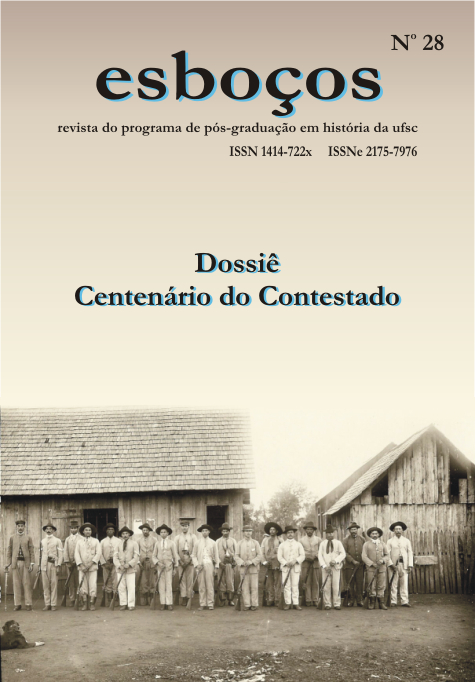The Bearded Monks Movement: Monk João Maria's representations and reinterpretations as the identity process of cabocla culture
DOI:
https://doi.org/10.5007/2175-7976.2012v19n28p151Abstract
The Monks João Maria D' Agostini and João Maria de Jesus were characters in the history of the cabocla resistance in the South of the country, at the beginning of the 20th century. Despite being the strongest presence in the Contestado Movement, their doctrine, however, was widely diffused and over signified several times according to the historical and social context. This is what occurs in the Bearded Monks Movement in the 1930 decade in Coloninha, Soledade region, Rio Grande do Sul, where a group of caboclos used Monk João Maria's doctrine and "authority" to provide identity and to produce resistance. We discuss the context in which this Movement happened, its progress and, above all, how this social group built identification processes with Monk João Maria's doctrine, rescuing, even after more than two decades of the Contestado Movement, the Holy Monk's figure and doctrine in organizing a social and religious movement.Downloads
Published
2012-12-05
How to Cite
Kujawa, H. A. (2012). The Bearded Monks Movement: Monk João Maria’s representations and reinterpretations as the identity process of cabocla culture. Esboços: Histories in Global Contexts, 19(28), 151–168. https://doi.org/10.5007/2175-7976.2012v19n28p151
Issue
Section
Special issue
License
Esboços: histories in global contexts adopts an Open Access policy and it is licensed under a Creative Commons Attribution 4.0 International License (CC-BY 4.0). Authors will be asked to sign an open access license agreement before publication.
Authors who publish with this journal agree to the following terms:
- Authors grant the journal Esboços: histórias em contextos globais (ISSN 2175-7976) right of first publication with the work simultaneously licensed under a Creative Commons Attribution 4.0 International License (CC-BY 4.0).
- This license allows users to remix, transform, and build upon the material, on the condition of giving acknowledgement of the work's authorship and initial publication in this journal.
- 3.Authors are able to enter into separate, additional contractual arrangements for the non-exclusive distribution of the journal's published version of the work (e.g., post it to an institutional repository or a personal website, or publish it as a book chapter or a translation).

This work is licensed under a Creative Commons Attribution 4.0 International License.







